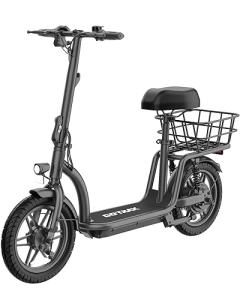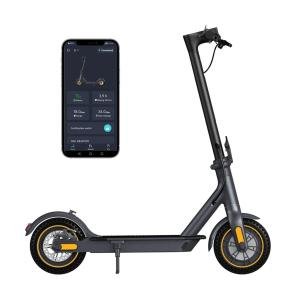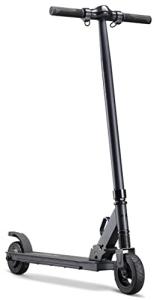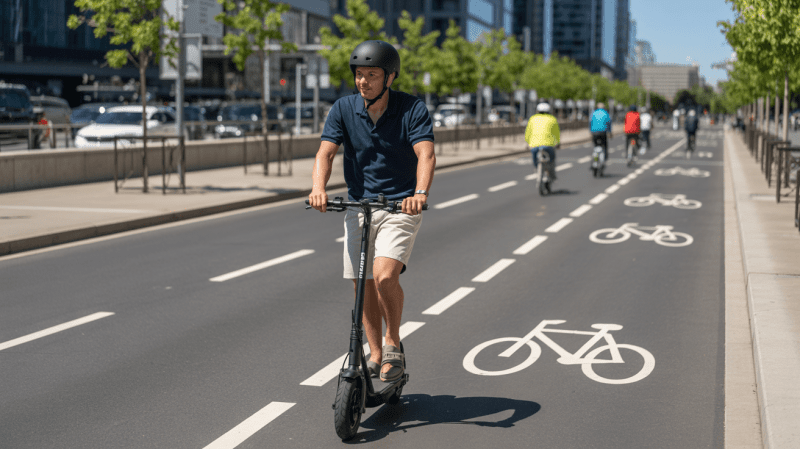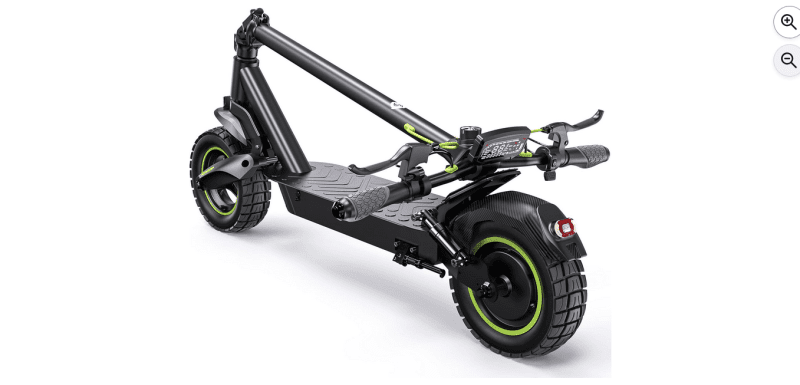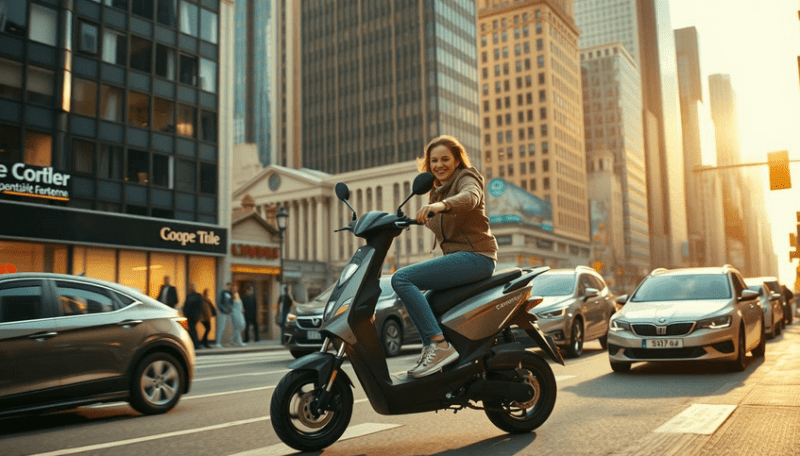Understanding Your Electric Scooter's Controls
First, familiarize yourself with the handlebars, which allow you to steer your scooter in the desired direction. Keeping both hands on the handlebars and maintaining a proper grip to ensure stability is important.
Next, locate the main controls:
- Throttle: Typically found on the right handlebar, used for speeding up.
- Brake Lever: Usually on the left handlebar, used for slowing down and stopping.
- Kickstand: Found near the base, used to prop up your scooter when not in use.
Understanding how these controls work together is crucial for effective starting and stopping.
Your electric scooter's dashboard or display panel is filled with important indicators. Pay close attention to the battery level and any warning lights. Familiarize yourself with the turn signals (if available) and lights, as they are essential for communicating with other riders and ensuring visibility in various conditions. Mastering these controls simplifies the riding process and reinforces the concepts shared in Starting and Stopping Safely: A Beginner’s Guide.
Basic Techniques for Starting Safely
When you're new to riding an electric scooter, understanding the basics of Starting and Stopping Safely: A Beginner’s Guide is essential. The first step is to ensure you’re always aware of your surroundings. Before you start moving, take a moment to look around. Check for pedestrians, cyclists, and other vehicles in your vicinity. This small habit can help prevent accidents and make your experience much smoother.
Next, familiarize yourself with your scooter's controls. Know where the throttle and brake are located and practice using them gently. When you’re ready to move, press the throttle slowly to gain momentum and maintain a steady speed. Avoid sudden movements that could catch you off guard or surprise other road users.
Equally important is the art of stopping. Always signal your intention to stop well in advance, especially if you’re in a crowded area. This gives those around you time to react. Apply the brake smoothly to bring the scooter to a gradual stop. This technique not only ensures your safety but also enhances the comfort of your ride.
Finally, as you gain confidence, practice these skills in low-traffic areas before venturing onto busier roads or paths. With time and repetition, the principles of Starting and Stopping Safely: A Beginner’s Guide will become second nature. Always remember that safe riding is a journey, so take your time to hone your skills.
Smooth Stopping Methods to Master
One of the most important skills to master when controlling an electric scooter is stopping smoothly. The way you come to a stop can greatly affect your safety and the comfort of your ride. This section will explore several effective methods for smooth stopping that every beginner should know. Remember, the key to Starting and Stopping Safely: A Beginner’s Guide is practicing these techniques until they become second nature.
The first method is called "progressive braking." This technique involves applying the brake lever firmly but not so hard that the wheels lock up. You want to find the sweet spot where the maximum braking force is applied without losing traction. To practice this, start riding at a moderate speed and gradually apply the brake. Feel the scooter slow down smoothly without any jolts. This method is especially useful in emergencies where you must stop quickly but safely.
If your scooter is equipped with regenerative braking, another effective smooth-stopping method is to use it. This system uses the motor to help slow down the scooter while slightly recharging the battery. To use regenerative braking, simply ease off the throttle and apply the brake gently. This will create a natural deceleration and make your stop less abrupt.
Finally, always be aware of your surroundings. Smooth stopping is not just about how you operate the brake; it’s also about anticipating stops well in advance. Keep an eye on traffic signals and the behavior of other riders. By being aware of what's happening around you, you can start slowing down before making a hard stop. This foresight and awareness are crucial to Starting and Stopping Safely: A Beginner’s Guide.
Tips for Safe Riding Practices
One of the most essential skills for riding an electric scooter is learning how to start and stop your vehicle safely. In Starting and Stopping Safely: A Beginner’s Guide, you'll discover that practicing the following tips can significantly enhance your safety on the road. Whether a new rider or just looking to refresh your skills, these simple guidelines keep you secure while navigating behind the handlebars.

Safety Gear is Essential: Always wear appropriate safety gear before starting your scooter. This includes a helmet, knee and elbow pads, and gloves. Helmets protect your head in case of falls or collisions, while knee and elbow pads safeguard your joints from scrapes and impacts. Gloves protect your hands and provide a better grip on the handlebars, enhancing your control over the scooter. Wearing this gear can greatly reduce the risk of injury and provide peace of mind while riding.
First, always ensure you know your surroundings before starting your scooter. Before turning it on, take a moment to check your mirrors (if available) and make sure there are no obstacles or pedestrians nearby. This quick habit will prevent accidents before you're even in motion. Remember that helmets and other protective gear are your first line of defense, so gear up before you start riding!

When you're ready to stop, be proactive rather than reactive. Start by anticipating stops early, such as at intersections or crosswalks. Gradually apply pressure to the brake lever and allow for sufficient stopping distance. This keeps you safe and helps you maintain control of your scooter. Always check your surroundings; other riders may not stop as smoothly as you!
Lastly, stay calm and focused during any start or stop actions. Avoid distractions like your phone or loud music. If you feel nervous, take a deep breath and remind yourself of the fundamentals of Starting and Stopping Safely: A Beginner’s Guide. Practicing these habits consistently will help build your confidence as a rider while ensuring safety for yourself and others on the road.
Conclusion:
Riding an electric scooter can be a fun and efficient way to get around, but it's important to prioritize safety, especially as a beginner. By familiarizing yourself with your scooter's controls, practicing basic starting and stopping techniques, and mastering smooth stopping methods, you'll be well on your way to becoming a confident and safe rider.
Remember, wearing the appropriate safety gear—such as a helmet, knee and elbow pads, and gloves—is essential to protecting yourself from potential injuries. Staying aware of your surroundings and being proactive in your riding habits will further enhance your safety and the safety of those around you.
As you continue to practice and gain experience, the principles outlined in Starting and Stopping Safely: A Beginner’s Guide will become second nature. Safe riding is a journey, so take your time to build your skills and always prioritize your well-being on the road. Happy riding!
DISCLAIMER
This document is provided for general information purposes only and should not be relied upon as providing legal advice, technical, or specific operational guidance to the reader, whether as to the practices described in the document or the applicable legal requirements and regulations. Just electricscooters.com expressly disclaims any responsibility for liability arising from or related to the use or misuse of any information in this document.



